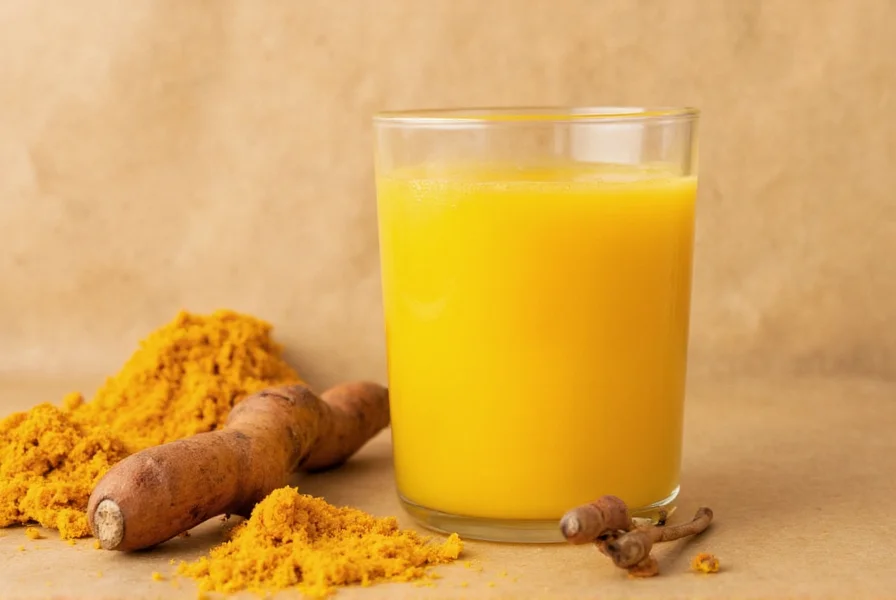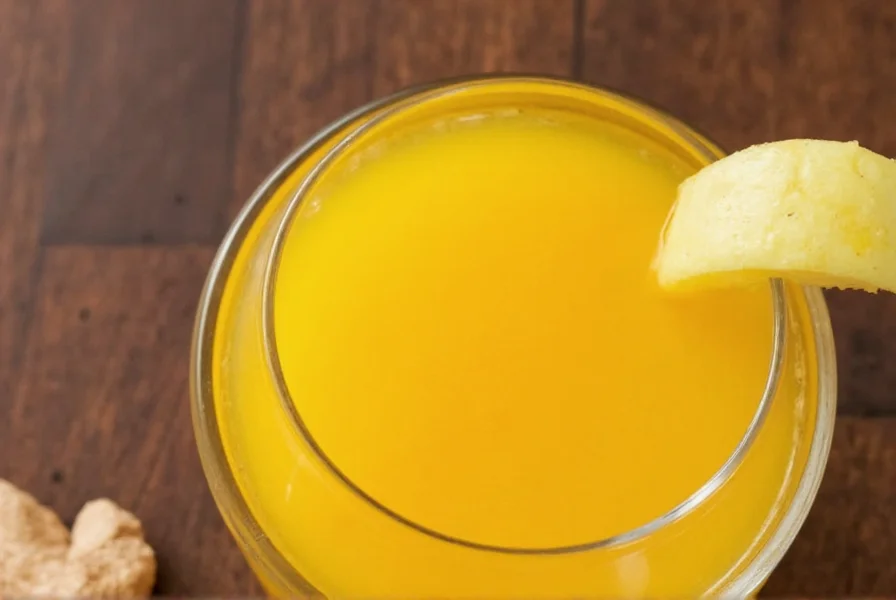Turmeric juice has surged in popularity as a functional beverage, but understanding its actual benefits requires separating scientific evidence from wellness trends. This golden-hued drink delivers concentrated curcumin, the primary bioactive compound in turmeric that's been studied for over 60 years. While not a miracle cure, regular consumption of properly prepared turmeric juice offers measurable health advantages when incorporated into a balanced diet.
The Science Behind Turmeric's Power
Curcumin constitutes about 2-8% of raw turmeric root by weight, making freshly juiced turmeric significantly more potent than powdered supplements. Research published in Advances in Experimental Medicine and Biology confirms curcumin modulates multiple biochemical pathways involved in inflammation. However, its notoriously poor bioavailability means proper preparation is essential—adding just 20mg of piperine from black pepper increases curcumin absorption by 2,000% according to a Planta Medica study.

Evidence-Based Health Benefits
When prepared correctly, turmeric juice delivers several scientifically supported benefits:
| Benefit | Scientific Support | Recommended Intake |
|---|---|---|
| Inflammation reduction | Multiple studies show curcumin matches NSAIDs for mild inflammation | 500-1000mg curcumin daily (≈2-4 inches fresh root) |
| Oxidative stress protection | Boosts antioxidant enzymes like glutathione | Regular consumption enhances cellular defense |
| Joint comfort support | 8-12 week studies show reduced stiffness in osteoarthritis | Consistent daily intake yields best results |
Safety Considerations and Side Effects
While generally safe, turmeric juice may cause issues for certain individuals. Those taking blood thinners should consult physicians before regular consumption, as curcumin has mild anticoagulant properties. Excessive intake (more than 8 grams daily of curcumin) may cause gastrointestinal discomfort in sensitive individuals. Pregnant women should limit consumption to culinary amounts, as high doses haven't been sufficiently studied during pregnancy.
Optimal Turmeric Juice Preparation
Maximize benefits with this evidence-based preparation method:
- Peel 2-3 inches of fresh turmeric root (yields approximately 1 tablespoon juice)
- Add to juicer with 1-inch ginger piece for complementary benefits
- Mix juice with 1 teaspoon coconut oil or olive oil
- Add pinch of black pepper (¼ teaspoon)
- Consume immediately or store in airtight container for up to 24 hours

This preparation method addresses curcumin's three main limitations: poor solubility, rapid metabolism, and limited absorption. The fat content enhances solubility, while piperine inhibits metabolic breakdown—making the health benefits of turmeric juice significantly more accessible to your body.
When to Drink Turmeric Juice
For optimal absorption and minimal digestive interference, consume turmeric juice:
- 30 minutes before meals to avoid competition with food compounds
- In the morning to support daytime inflammation management
- With vitamin C-rich foods (like lemon) which may further enhance bioavailability
Avoid consuming turmeric juice within 2 hours of iron-rich meals if you have anemia concerns, as curcumin may temporarily inhibit non-heme iron absorption. Those with gallbladder issues should consult healthcare providers before regular consumption.
Frequently Asked Questions
How much turmeric juice should I drink daily for health benefits?
Research suggests 500-1,000mg of curcumin daily provides measurable benefits. Since fresh turmeric contains approximately 3-4% curcumin by weight, 2-4 inches of root (yielding 1-2 tablespoons juice) meets this requirement when prepared with black pepper and healthy fats for optimal absorption.
Can turmeric juice help with arthritis pain?
Multiple clinical studies show curcumin reduces inflammation markers associated with osteoarthritis. A 2016 study in the Journal of Medicinal Food found 1,000mg daily of curcumin with enhanced absorption significantly improved pain scores and physical function after 8 weeks. While not replacing medical treatment, properly prepared turmeric juice can be a valuable complementary approach.
Why does turmeric juice need black pepper and fat?
Curcumin has extremely poor bioavailability on its own. Piperine in black pepper inhibits enzymes that break down curcumin in the liver and intestines, increasing absorption by up to 2,000%. Fat helps dissolve curcumin since it's fat-soluble, making it more accessible to your body. Without these components, over 75% of the curcumin passes through your system unused.
How long does it take to notice benefits from turmeric juice?
Most studies showing significant anti-inflammatory effects used 8-12 week protocols. You may notice subtle improvements in joint comfort or energy within 2-4 weeks with consistent daily consumption of properly prepared juice. Maximum benefits typically require 8+ weeks of regular use, as curcumin works cumulatively to modulate inflammatory pathways.











 浙公网安备
33010002000092号
浙公网安备
33010002000092号 浙B2-20120091-4
浙B2-20120091-4